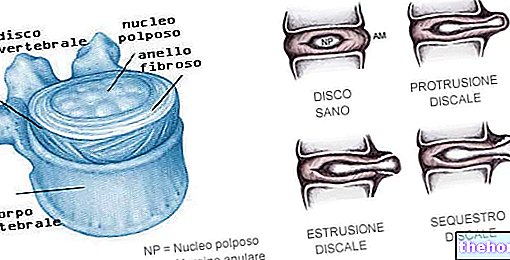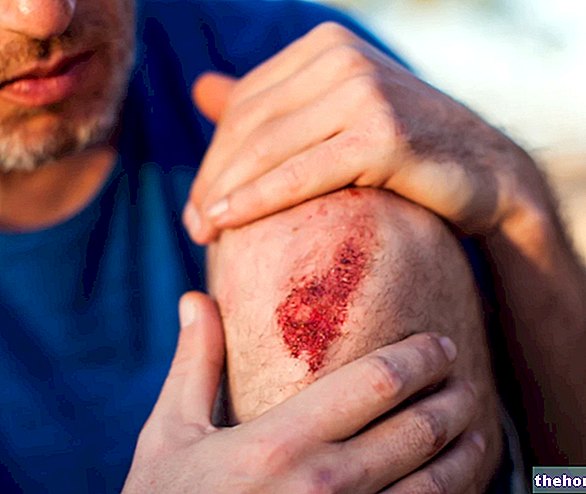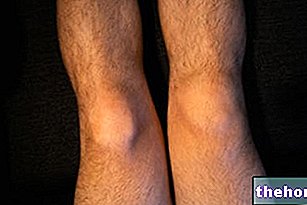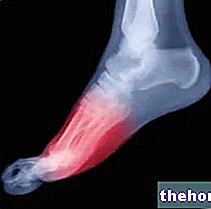The causes that induce the formation of these cysts are unclear; according to the most reliable hypotheses, these swellings would be linked to trauma or defects in the joint and / or tendon structures.
More common among women and people between the ages of 20 and 40, tendon cysts are often asymptomatic; when they are symptomatic, they are responsible for pain, tingling, numbness and muscle weakness.
The most frequent sites of tendon cysts are: the back of the hand, the wrist and the palm of the wrist.
The feasibility of a treatment depends on the presence or absence of symptoms: an asymptomatic tendon cyst does not require any type of therapy.

Typically, the fluid contained in a tendon cyst is synovial fluid. Dense, sticky, colorless and with a gelatinous consistency, synovial fluid is a substance physiologically present in all synovial joints, whose function is to preserve the various joint components (ligaments, tendons, joint capsule, etc.) from friction and friction.
JOINTS AND TENDONS: WHAT ARE THEY?
The joints are those anatomical elements, sometimes even very complex ones, which put two or more bones in communication with each other and which guarantee the skeleton a certain mobility.
Tendons, on the other hand, are formations of fibrous connective tissue, endowed with a certain flexibility, which join a skeletal muscle to a bone.
POSSIBLE LOCATIONS OF TENDON CYSTS
The most common sites of tendon cysts are: the back of the hand and wrist and the palm of the wrist.
The less common onset points, on the other hand, are:
- The base of the fingers of the hand, from the palm side. The tendon cysts that form in these sites generally have dimensions comparable to those of a pea;
- The fingertips of the hand. Tendon cysts located in these areas are also called mucous cysts;
- The outside of the knee;
- The outer part of the ankle;
- The back of the foot.
EPIDEMIOLOGY
Episodes of tendon cysts are more frequent in women and concern, for almost 70% of cases, subjects between the ages of 20 and 40.
The formation of a tendon cyst can also affect very young subjects, but it is a very rare phenomenon.
WHEN TO SEE THE DOCTOR?
Episodes of tendon cysts are not considered medical emergencies. However, their occurrence always deserves the attention of the doctor, as a precaution.
It is especially important to seek medical attention if you have symptoms, such as pain, tingling, etc.
However, in some particular circumstances, doctors may prescribe the execution of more in-depth tests, such as a nuclear magnetic resonance of the affected anatomical portion, an "ultrasound scan of the swollen mass and the" aspiration, and subsequent analysis, of the synovial fluid contained. inside the cyst.
The particular circumstances that may require the use of the above tests include a suspected condition of arthritis and a suspected presence of a malignant tumor.
OBJECTIVE EXAMINATION AND HISTORY
- The physical examination is the set of diagnostic maneuvers, performed by the doctor, to verify the presence or absence, in the patient, of signs indicative of an abnormal condition.
For example, in the presence of a suspected tendon cyst, one of the classic diagnostic maneuvers is to "apply pressure on the swelling and assess whether" the swelling is soft or stiff. A soft swelling is indicative of a synovial cyst. - The anamnesis, on the other hand, is the collection and critical study of the symptoms and facts of medical interest, reported by the patient or his family (N.B: family members are involved, above all, when the patient is small).
In the presence of a suspected tendon cyst, the history can be used to determine whether the swelling is compressing a nerve ending or not.
SUCTION AND LABORATORY ANALYSIS OF THE LIQUID
The aspiration and laboratory analysis of the fluid contained in the tendon cysts are the most reliable diagnostic tests that eliminate any doubt about the nature of the swelling.
, for anti-inflammatory purposes;
Surgical removal involves eliminating the cyst and what holds it together with the joint or tendon.
There are two possible operative techniques: the “open” operative technique and the arthroscopic operative technique.
Surgical removal of tendon cysts is safe, but not completely risk-free. Among the main complications, involuntary damage to the anatomical structures - including nerves, blood vessels and tendons - adjacent to the tendon cyst is reported.




























